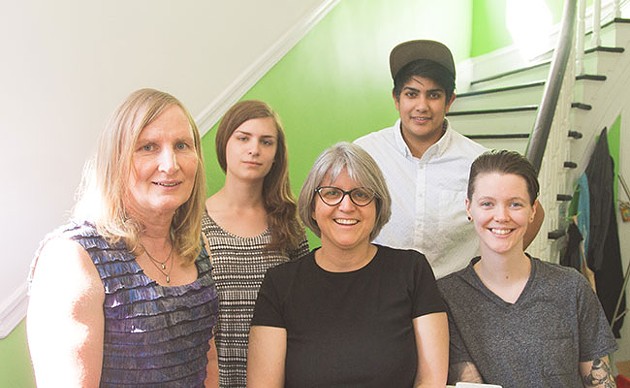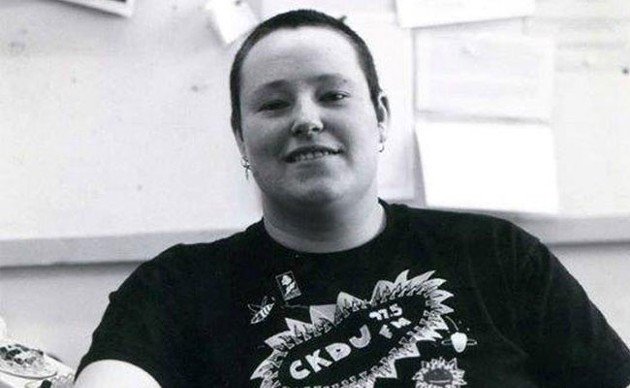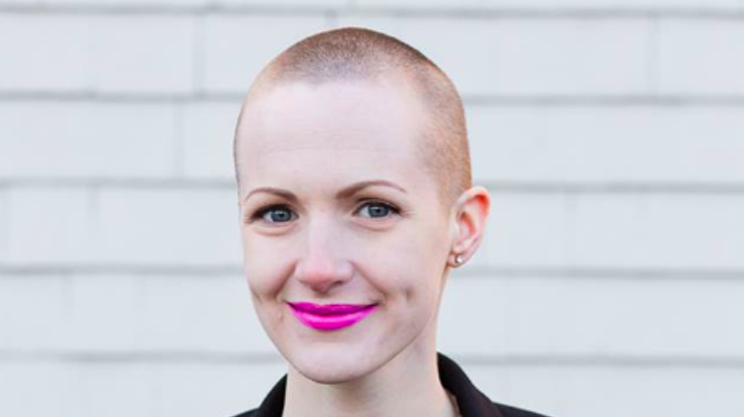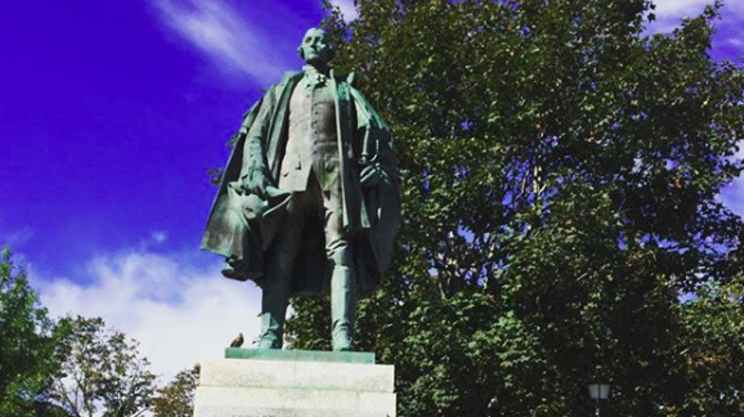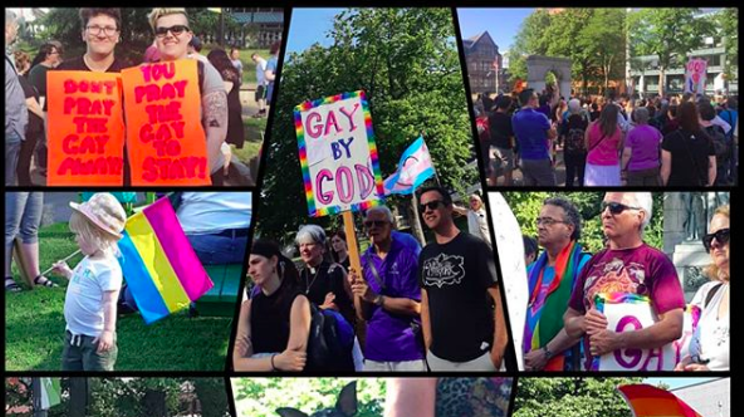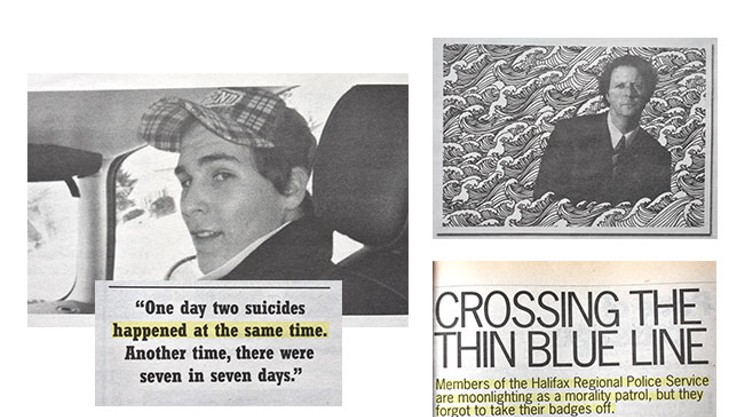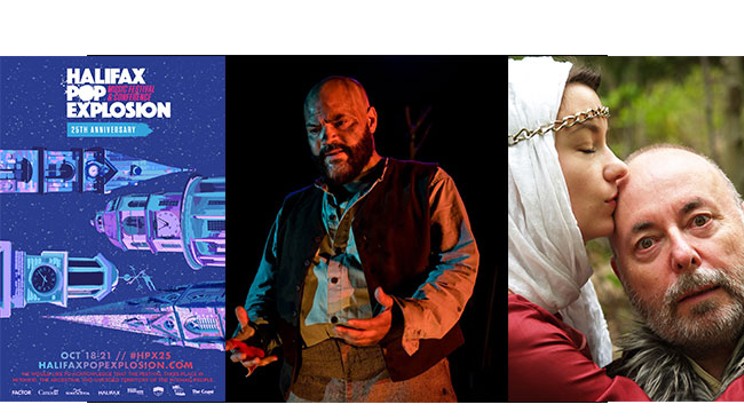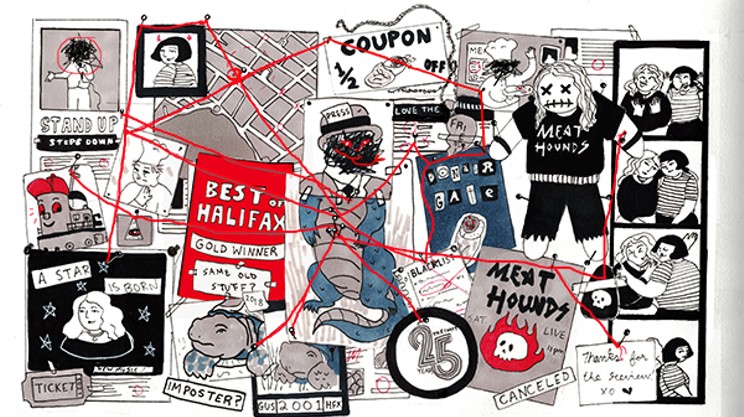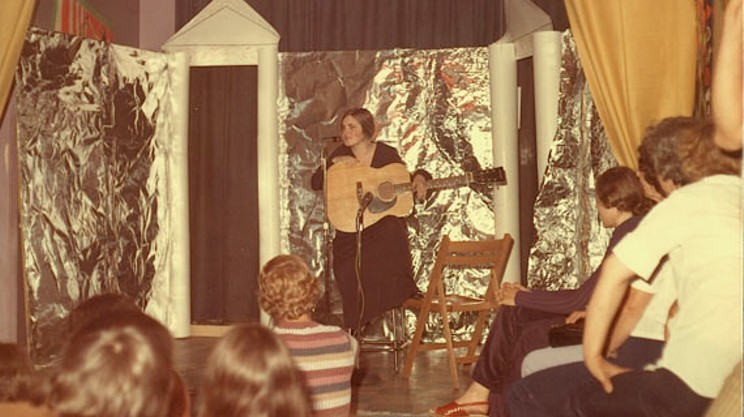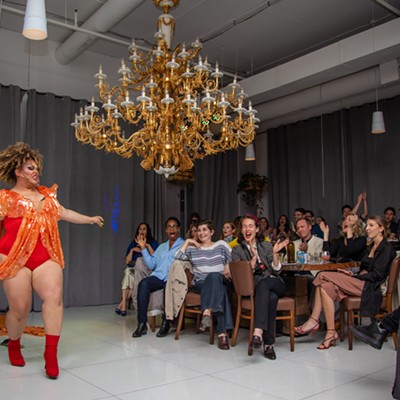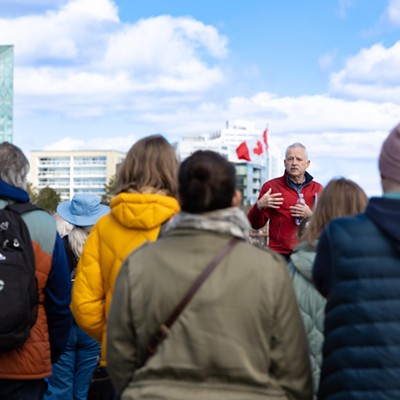Maura Donovan: The social worker turned her volunteer passion into The Youth Project.
It was her time volunteering at Halifax’s Gayline that motivated Maura Donovan to start the LGBTQ youth group that would later become The Youth Project, Nova Scotia’s haven for queer and trans youth.
One caller, a young gay man in grade 10, was desperate for a group. “I thought my gosh this kid is clearly brilliant and his parents adore him and are so supportive,” says Donovan. “If he’s struggling this badly, what is it like for the kids who have no family support, the kids who don’t do well in school?”
That young man became a core member of The Youth Project, valedictorian of his class and is now in his 40s. He’s still in touch with Donovan.
The Youth Project came to fruition during Donovan’s Dal social work field placement. It occurred to her that instead of doing 500 hours at some agency, she could use it to start something for
Then Planned Parenthood stepped up as a sponsor, offering support and administration. “It was great because we got to do it the way we wanted to, the youth and I,” says Donovan. The group started with a male and female
Longtime Youth Project executive director Leighann Wichman attended that first women’s meeting. Wichman would be a constant throughout the Project’s
When the movie Philadelphia was released in 1993, Donovan took the youth to the film.
The first workshop request came from a Grade 12 class at Halifax West High School, who faxed Donovan questions such as “What causes homosexuality?” and “Did you choose to be homosexual?”
When they asked Donovan—then 25 and “kind of old,” according to the students—if she could bring people more their age, Donovan extended the invitation to members of the youth group.
Soon the newly trained facilitators were accompanying Donovan to do presentations clear across the province. She remembers one rural community that they had to visit twice: Once to convince parents to let them present, and once to do the actual workshop.
In 1998 The Youth Project got funding and was able to hire Wichman and another staff person. That year Donovan, who had been hired by the IWK and was planning a move, resigned.
The Youth Project gave Donovan the confidence to start Supportive Housing for Young Mothers, which took seven years to get off the ground. Donovan then worked for the Extra Support for Parents program until the IWK closed it down last year.
She currently lives in Dartmouth with her partner and 15-year-old. But she still keeps up with the
Lorne Izzard: The CBC vet was instrumental in bringing AIDS support to the local Black community.
In 1974 Lorne Izzard came to Halifax for a long weekend and never left.
Born in Cape Breton, Izzard grew up in Amherst and came out as gay when he was 16. “I was but a baby,” he jokes.
Nearly two decades later, the AIDS epidemic was in full force when the Halifax-based AIDS Coalition of Nova Scotia asked Izzard to attend a meeting at their office. Though they were in the heart of the Black community on Gottingen Street, the posters on the wall were all of
“Their question to us was, ‘Why aren’t Black people coming in to get any of the information that we have?’” says Izzard. “‘Well,’ we said, ‘have you gone out into the community? Do people even know that you’re here?’” says Izzard. “‘And if they do, if they walk up these stairs, and they come into the office, it’s a sea of white people.’
“They said, ‘Oh my god, you’re right.’”
In 1991, the Coalition got a grant and created the Black Outreach Project. The project conducted a needs assessment, printed Afrocentric materials and went into Black communities throughout the Atlantic provinces. “We did a lot, a lot of work,” says Izzard. The project was staffed by Kim Bernard, formerly of the Cultural Awareness Youth Group and member of the African Nova Scotian a cappella quartet Four the Moment. (Bernard’s interview with the AIDS Activist History Project can be found on aidsactivisthistory.ca.)
Izzard remembers Bernard speaking to a convention of the African United Baptist Association. “That’s how we were able to get into the church and have the elders specifically talking about how we were losing all of our young men,” he says. Izzard also hosted weekly meetings in his apartment for young people with AIDS (including young Black men) who couldn’t find a place to meet.
Through the Canadian AIDS Society, Izzard and co. found other groups “of colour and culture” who were organizing in their own communities and started the Cultural AIDS Network. The network, of which Izzard was chair, also worked with Asian communities and translated their brochures into various languages. Less than a year later the network’s funding was cut.
But it wasn’t all work for Izzard, who was never much for the bar scene. He helped start JUKA, a social group for Black gay, lesbian and bisexual people in Halifax. They met in members’ homes and held some dances.
“We may not have the same views but we’re here for the same reason which is that we have nowhere else to go where we can be with our own,” Izzard says of the short-lived group.
Throughout the 90s Izzard worked full-time for the CBC. Following a series of promotions at the broadcaster, Izzard had to pare down his volunteer commitments.
“It was the same group of people who were trying to head everything up so it was very taxing,” he says. Plus Black AIDS activists weren’t always welcome by the mostly white gay male groups. “We were fighting the racism inside there plus we were marching because we weren’t allowed into the bars.”
Izzard retired from
Forty-four years after that fateful long weekend, Izzard still lives in Halifax. He spends his days with his partner of 14 years, Phil, travelling and enjoying some well-deserved downtime.
Shelley Taylor: How a bunch of second-hand books and a handful of vibrators became Halifax’s best sex shop.
Shelley Taylor was 29 years old and had $6,000 of cashed-in RRSPs when she started Venus Envy—the now-iconic Halifax sex shop and bookstore—in 1998.
Taylor had moved back to Halifax from Ottawa and was running a catering business but wanted to do something different. She went dumpster-diving for furniture and flooring, bought piles of second-hand books, ordered a couple thousand dollars of sex toys and opened the first Venus Envy location on Inglis Street.
“It had almost no stock whatsoever It looked like a gallery,” she says, laughing. “Here is a vibrator!” Taylor and friends made the space into a “beautiful, kind of femme-y” store with soft seating, tea, cookies and flowers.
The store was an attempt to provide a sex-positive, women- and queer-friendly space, where people could ask questions, feel comfortable and be respected.
“It was only a couple of years later that I realized that why I really wanted to open Venus Envy was to try to heal some of the stuff that was broken in me from a sexual health perspective,” says Taylor.
At the time, Taylor felt a lot of shame around having herpes, which she contracted at 18. She was also in a long-term romance with a queer man and wasn’t able to find any resources about relationships like hers. When she did finally confide in someone about her relationship, the person—who assumed that all gay men were HIV-positive—reacted with horror. “Also, I needed a job,” she adds jokingly.
The store was well-received first by “the south end ladies,” as Taylor calls them. Then “tonnes of people started showing up who just seemed so excited and so relieved because they were seeing themselves reflected in a space and in the books and in what we were doing.”
The 1998 Pride Parade was held three months into Venus Envy’s operation. It poured that year and Taylor remembers people coming to the store post-parade, wearing handmade Pride T-shirts and adorned with buttons. “It was jammed with all of these wet queers and I was thrilled.”
That day prompted Taylor to relocate to the more central 1598 Barrington Street, where Venus Envy remains to this day. Opening day on Barrington was also the first day of the job for Marshall Haywood, Venus Envy’s first full-time staff person and future owner.
Taylor sold the Halifax location in 2008 and the Ottawa store in 2016 after burning out years before. She still does sex ed, but would like to do more, and volunteers for Action Canada for Sexual Health and Rights which provides information on reproductive and sexual health. She currently has an “awesome” job with the Ottawa Tool Library, and two years out she no longer misses Venus Envy, though she still gets to be involved in the fun stuff, like the recent 20th anniversary.
“To get to see the stores surviving, thriving and doing things differently than I would have done them—but in the ‘Oh that’s a great idea’ kind of way,” she says. “And interacting with these incredible staff people who have come on since I’ve been long gone. That to me, that’s joy.”
Brenda Barnes: The activist’s fire is rooted in campus radio.
Much of the activism that Brenda Barnes was a part of in the early 90s—queer, AIDS, feminist—was a result of her time at CKDU. “Back in the day, the flavour around the radio station at Dalhousie University was of a very activist bent,” says Barnes, who spent five years with the station.
There she helped develop Living After Diagnosis, a monthly spot chronicling life with AIDS, as well as All Day All Gay, a daylong marathon of queer content. Barnes had just left the navy, which punished “homosexual behaviour,” in advance of the CSIS investigation required to maintain her security clearance. The self-described butch lesbian knew they would talk to her colleagues, and didn’t want them to have to lie.
At the
When the DJ played a previously agreed upon
Barnes did safe sex education with the People With AIDS Coalition, helped establish the Nova Scotia Women and AIDS Project, and attended an AIDS conference in Toronto. She also worked on Life After Diagnosis, a film sponsored by the PWA Coalition.
In April of
“You know when you see it, all laid out the way it was, and to see how many people had died already,” she says through tears, “and the amount of love that there was for everything single person…”
The newly formed Parents and Friends of Lesbians and Gays (PFLAG) had also set up booths on the grounds where people could get hugs. “It was unreal,” she says.
That same year the CRTC held a public hearing on CKDU’s broadcasting license after receiving a complaint about “coarse language” and “
Having “hit the wall,” Barnes visited a friend in the Yukon and decided to leave Halifax, where she no longer felt safe. Two decades plus after moving up north, Barnes has the balance she was searching for. She mountain-bikes and swims and has gotten into professional acting and stand-up comedy.
Barnes has worked for the CBC, the provincial government and a women’s shelter and is now the ED of an organization that encourages young women to take up the trades and careers in tech. In November she travelled to Ottawa for the government’s apology to LGBTQ+ Canadians. Though her activism might look different than it did in the '90s, “I’m still advocating for the underdog.”

